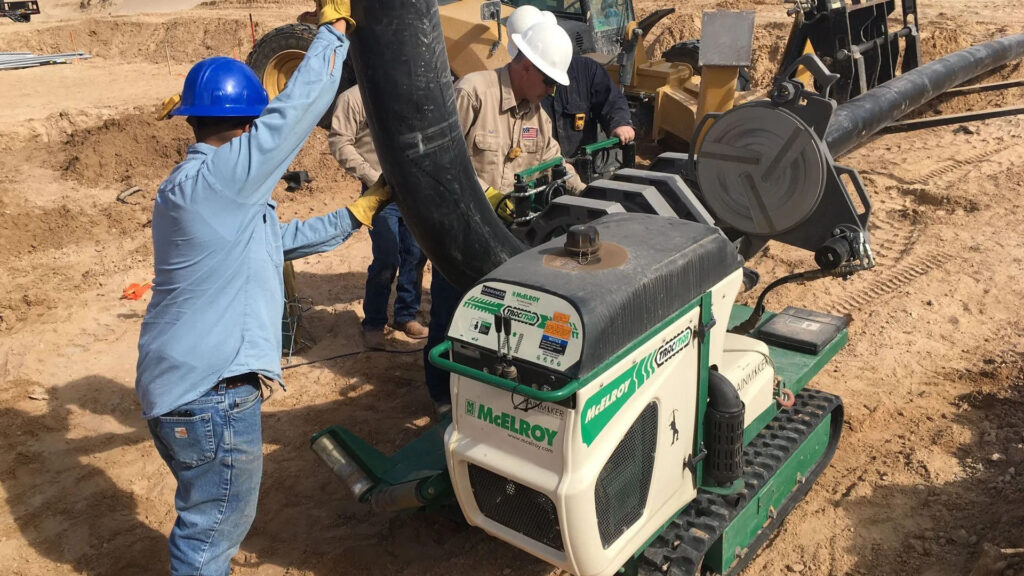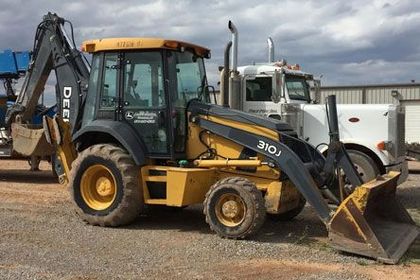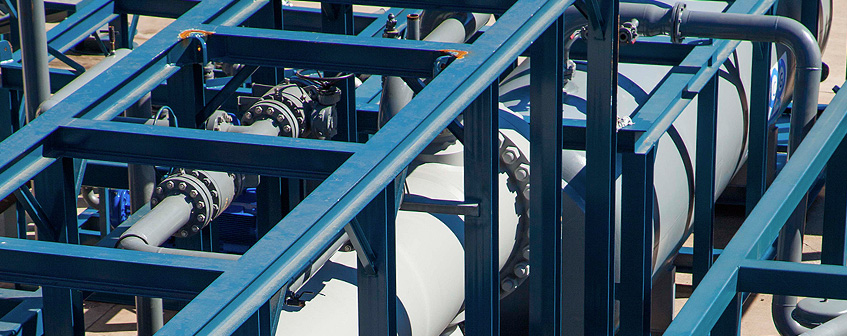Superior Rentals Contact: best ways to connect
Wiki Article
A Comprehensive Guide to the Different Kinds Of Oil Field Equipment and Pipeline Equipment Available
The oil and gas sector counts heavily on specialized devices for effective removal and transport. Numerous kinds of equipment, from drilling rigs to storage tanks, play important functions in this complicated procedure. Each tool serves unique functions that add to general operational success. Recognizing these parts is important for any individual associated with the market. As the market progresses, so as well do the innovations that support it. What improvements are on the horizon?
Drilling Rigs: The Backbone of Oil Expedition
Drilling rigs work as the crucial equipment in the domain name of oil exploration, allowing firms to gain access to hydrocarbon reserves buried deep under the Earth's surface area. These rigs come in different kinds, consisting of land rigs, offshore rigs, and mobile units, each made to operate in certain environments. Furnished with advanced innovation, piercing rigs can penetrate geological formations with accuracy, guaranteeing reliable resource extraction. The structural honesty and functional capabilities of these rigs are vital, as they should stand up to severe conditions and significant stress. Furthermore, the selection of a drilling gear affects the general job cost and timeline, making it an essential factor to consider for oil companies seeking to maximize their exploration initiatives and make best use of performance in their procedures.Pumps: Crucial for Liquid Activity
In the oil removal procedure, the function of pumps is considerable, promoting the activity of liquids throughout numerous phases of manufacturing. Pumps are necessary for moving unrefined oil, water, and various other fluids from below ground tanks to the surface and afterwards with pipelines to refineries. They come in various types, including centrifugal, favorable variation, and completely submersible pumps, each offering certain objectives based upon the fluid attributes and operational demands. Centrifugal pumps are commonly used for their efficiency in high-flow applications, while favorable displacement pumps master managing viscous liquids. The option of pump impacts total effectiveness, operational security, and maintenance prices. Appropriate selection and upkeep of pumps are crucial for optimizing manufacturing and reducing downtime in oil field procedures.Shutoffs: Controlling Circulation and Pressure

Valves play a crucial role in handling the circulation and pressure of fluids within oil fields and pipes. Numerous kinds of valves offer distinct applications, each developed to accomplish specific functions essential for effective procedure - Superior Oilfield Rentals. Understanding the qualities and usages of these shutoffs is necessary for maximizing system efficiency and security
Types of Valves
Vital elements in oil area operations, valves play a vital function in managing the flow and pressure of liquids within pipes and devices. Different types of valves are utilized to meet the varied demands of oil and gas manufacturing. Usual types include entrance shutoffs, which offer a straight-line circulation and very little pressure decline; world shutoffs, understood for their throttling capacities; and sphere valves, recognized for their quick on/off control. Furthermore, check shutoffs prevent heartburn, while butterfly valves supply a light-weight solution for managing flow. Each valve kind is made with certain products and configurations to stand up to the rough problems usually discovered in oil fields, guaranteeing integrity and performance in operations. Recognizing these types is crucial for efficient system monitoring.Valve Applications and Features
While different sorts of valves offer unique objectives, their primary applications revolve around managing flow and stress within oil and gas systems. Valves such as gateway, globe, and round valves regulate visit the site liquid movement, making certain peak performance and security. Gate shutoffs are generally used for on/off control, providing marginal flow resistance. World valves, on the various other hand, offer accurate circulation regulation, making them ideal for throttling applications. Sphere shutoffs are favored for their quick procedure and tight sealing capacities. Furthermore, stress safety valve are critical for stopping system overpressure, safeguarding devices honesty. Overall, the suitable option and application of shutoffs enhance operational performance, guaranteeing the trusted transport of oil and gas with pipes and processing facilities.Compressors: Enhancing Gas Transport
Compressors play a vital role in the effective transportation of all-natural gas, ensuring that it moves smoothly with pipes over fars away. These gadgets enhance the pressure of all-natural gas, allowing it to conquer rubbing and altitude changes within the pipeline system. Furthermore, compressors assist in the harmonizing of supply and need, suiting fluctuations in consumption and production rates. Various kinds of compressors are employed in the industry, consisting of centrifugal, reciprocating, and rotating screw compressors, each offering distinctive benefits based on the operational requirements. Regular maintenance of these compressors is vital to maximize efficiency and minimize downtime, ultimately adding to a trusted gas transportation network. Their critical function emphasizes the importance of compressors in the overall oil and gas facilities.Storage Tanks: Safe and Efficient Fluid Administration
Reliable transport of gas relies upon different support group, one of which is the appropriate monitoring of storage tanks. These containers play an essential function in securely including fluids, guaranteeing that functional performance is kept while lessening environmental risks. Created from long lasting materials, they are designed to withstand high pressures and destructive components. Correctly sized and tactically located, storage tanks assist in the smooth flow of gas and other liquids, protecting against traffic jams in supply chains. Regular upkeep and monitoring are important to detect leaks or architectural problems, advertising security and conformity with regulative criteria. Inevitably, the efficient monitoring of tank is crucial for the total integrity and integrity of the oil and gas industry's fluid handling systems.
Pipeline Equipments: Infrastructure for Transportation
Pipeline systems act as the foundation of the oil and gas market, helping with the reliable find out here now transportation of hydrocarbons over large ranges. These systems are composed of various elements, consisting of pipelines, valves, pumps, and compressors, all carefully designed to ensure smooth flow. The products made use of in pipeline construction, frequently steel or high-density polyethylene, are chosen for durability and resistance to rust. Pipeline networks can extend throughout land and water, linking manufacturing websites to refineries and warehouse. Furthermore, progressed modern technology makes it possible for real-time monitoring of flow rates and pressure levels, enhancing operational efficiency. The strategic positioning of these pipes minimizes environmental effect while optimizing source availability, consequently playing an essential duty in conference power demands worldwide.Security Equipment: Guaranteeing Worker and Environmental Management
The operation of pipeline systems, while vital for power transport, likewise important source provides considerable security obstacles for workers and the atmosphere. Safety and security tools plays a substantial function in minimizing these risks. Personal safety equipment (PPE) such as headgears, gloves, and non-slip shoes safeguards workers from physical dangers. Furthermore, gas discovery systems keep track of for leakages, guaranteeing that unsafe compounds do not position a threat to employees or the surrounding community. Emergency situation closure systems are critical for rapidly halting procedures during a situation, stopping potential calamities. Spill control products, including absorbents and obstacles, are fundamental for reducing ecological impact. Generally, buying all-encompassing safety and security devices is critical for preserving operational stability and shielding both workers and the setting in the oil and gas sector.
Regularly Asked Inquiries
Just how Do I Select the Right Oil Field Equipment for My Job?
Selecting the best oil field equipment involves evaluating project specifications, budget plan constraints, and operational demands. Consider factors such as tools integrity, compatibility with existing systems, and the vendor's track record to guarantee peak efficiency and safety and security.What Are the Upkeep Needs for Oil Field Equipment?
Maintenance needs for oil field devices consist of normal inspections, lubrication, and timely fixings. Operators must likewise adhere to supplier standards, monitor efficiency metrics, and assurance compliance with safety and security policies to boost long life and effectiveness.
Just How Can I Ensure Compliance With Environmental Laws?
To ensure conformity with environmental guidelines, firms have to conduct regular audits, implement best methods, purchase training, preserve appropriate paperwork, and stay updated on regulations (Superior Oilfield pipeline equipment rentals). Partnership with environmental firms can also improve adherence to guidelinesWhat Is the Ordinary Lifespan of Pipeline Equipment?
The average life expectancy of pipeline devices commonly ranges from 20 to 50 years, relying on variables such as material high quality, ecological problems, and upkeep techniques. Normal inspections can significantly influence durability and functional effectiveness.Just how Do I Securely Carry Oil Field Equipment to Remote Locations?
Transferring oil field tools to remote places requires mindful planning, consisting of path assessment, safeguarding licenses, using ideal automobiles, and making certain safety and security methods are adhered to. Appropriate training and communication amongst staffs are crucial for successful transport.Report this wiki page